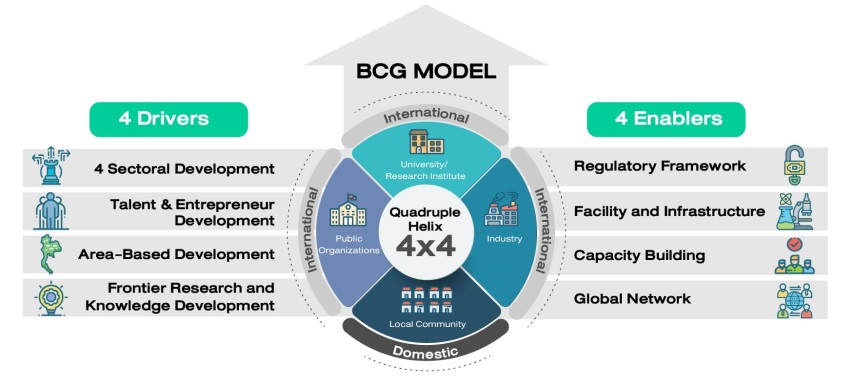In November 2019, Thailand’s Ministry of Higher Education, Science, Research and Innovation (MHESI) unveiled a proposal entitled “BCG in Action: The New Sustainable Growth Engine” mapping out strategies to drive BCG agenda forward.
Blessed with rich natural resources and strong agricultural activities, Thailand will apply the BCG model to focus on four s-curve industries - namely agriculture and food; bioenergy, biomaterial and biochemical; medical and wellness; and tourism and creative economy. Science, technology and innovation have enormous roles to play in this BCG movement. Innovations can be employed to enhance the capacity and competitiveness of players across the value chain, both upstream and downstream, in all four s-curve industries.
With proper agricultural innovations, farm productivity and efficiency can be raised, benefiting the whole bioeconomy as biomass is the foundation of all industries in the bioeconomy model. Farm production improvement also boosts income of farmers and communities, and thereby reducing social disparity.
Innovative technology can be applied to add value to resources and agricultural products, and thereby enhancing the competitiveness of downstream industries. High-value products for the agriculture and food industry could be, for examples, functional food ingredients; for health and medicine industry are biopharmaceuticals and precision medicine treatment; for energy and chemicals industry are valorized fuels and chemicals, and for tourism industry a medical or knowledge-based tourism.
The four target industries currently have a combined economic value of 3.4 trillion THB (21% of GDP). BCG model has a potential to increase the economic value to 4.4 trillion THB (24% of GDP) in the next five years.
BCG strategy consists of 4 drivers and 4 enablers, involving close collaborations among the government, industry, communities, academia and international organizations.

